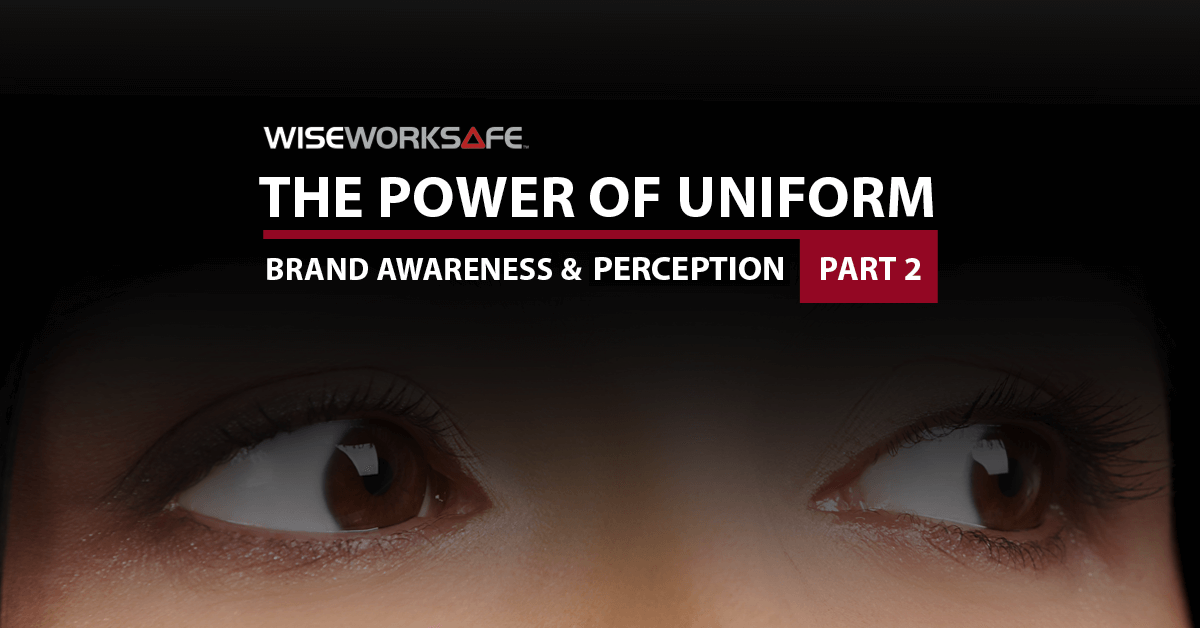
The Power of Uniform Part 2 of 4: Brand Awareness and Perception
Whether you’re a marketing executive, procurement manager or managing director, building a strong brand is undoubtedly one of the core goals within your organisation. Following on from part 1 of our ‘Power of Uniform’ series, in which we explored how to stand out from the crowd, we’ll be considering how to build brand awareness and improve brand perception through uniform. We’ll break down the definitions of these branding measures, and share insights on how other brands enjoy widespread familiarity due to a strategically designed and implemented uniform.
Brand Awareness vs Brand Perception
It’s not uncommon for the terms ‘brand awareness’ and ‘brand perception’ to be confused with each other, but they are actually very different measures. Furthermore, the methods a brand can use to strengthen these metrics are not the same, as discussed later in this article.
Brand awareness in its simplest form is a measure of how many individuals are familiar with your brand; in other words, the number of people who have heard of you. Brand awareness grows each time a consumer encounters your brand. This can be broken down into two metrics: ‘brand recognition’ and ‘brand recall’.
Brand recognition is where a consumer sees some element of your brand, for example your product or logo, which they recognise and associate with your company or brand. This level of recognition plays a strong part when consumers make a buying decision.
Brand recall is harder to achieve, as this is when your brand comes to mind when consumers think about the product category in which you operate. For instance, a soft drinks company like Coca-Cola would strive to be the first brand consumers think of when they’re thirsty.
Brand perception, on other hand, is not a measure of the number of people aware of you and the level of familiarity, but instead is a consideration of the values consumers attach to your brand. Do they think of quality, security, speed, fun, luxury, innovation, ease of use or value for money? Or do they perceive your brand in a less positive light?
It requires patience and skill to determine and influence brand perception, as it lives in the minds of your customers and potential customers. Measurements can be gained through surveys and buying trends, through which you can learn how to craft your marketing message accordingly.
Brand awareness and perception are equally important, and there is little point building one without the other. Doing this could result in a large number of people thinking badly of you, or a handful of people loving your brand while nobody else has heard of it.
Let’s take a look at how brand awareness and perception should both be considered when selecting uniform for your staff.

Maximising Brand Awareness
High consumer awareness of successful brands such as the AA, Barclays and B&Q, is not achieved through large scale marketing alone, but is also a result of the strategic approach they take to branding and communications. This goes beyond television advertisements and high street stores, but includes their uniform too.
When looking to maximise brand awareness through uniform, here are some rules to follow. These help to maintain consistency throughout your staff, a lack of which could negatively impact brand recognition and recall.
- Use colours, logos and other brand assets consistently
- Ensure your uniform design is aligned with other customer touchpoints
- Set clear guidelines as to when and where staff should wear their uniform
Consistency is key, in order to avoid consumers receiving a mixed message when they see your staff. This doesn’t mean you can’t use uniform to differentiate between teams, roles or departments, but there should still be brand familiarity throughout the organisation.
Similarly, your staff should be recognisable wherever they are, and have a clear connection with the rest of company’s marketing elements. This could include your showroom or retail environment, signage, vehicles, advertising, website and anywhere else your organisation promotes the brand.
Improving Brand Perception
If you look at the big picture, there are many aspects which can affect how customers perceive a brand. Volkswagen, Ryanair and Sports Direct are examples of companies which have suffered from poor brand perception in recent years, through reasons such as product, customer service and business ethics. These are fundamental areas which must be right, or other attempts to build the brand will be fruitless.
Where these are already perceived positively, however, uniform can play a vital role in the next step towards strengthening the brand. Examples of organisations who are doing this well include Virgin Atlantic, Harrods and Transport for London.
The way your brand message can be conveyed through corporate clothing is powerful, and often overlooked in an increasingly digital world, where face-to-face contact between a brand and its customers is dropping. A 2015 study showed that 85% of consumers would still rather visit a physical retail store than shop online. This touchpoint is one of the strongest places to utilise uniform, and shows the importance of human interaction with your customers.
Nike utilise messaging wonderfully throughout their retail and corporate uniforms, with many staff wearing t-shirts reading ‘Unlimited’ throughout the launch of their Serena Williams range of products. Microsoft employees wore bright t-shirts reading ‘Dare to Live’ as they challenged members of the public to pit their existing mobile phones against the new Windows Phone.
When agreeing on the message to be used throughout your staff uniform, whether in the form of text or subliminal elements such as colour, there are several points to consider. These help ensure that your message is consistent and aligned with your brand.
- Consider the audience that the message will be displayed to, as this can affect who will wear the uniform, and where.
- Ensure the message will help achieve your organisation’s goals, whether that be to drive sales, strengthen consumer trust, or spread the word about what you do for society.
- Consult appropriate stakeholders and staff, as the individuals wearing the uniform must also believe in the underlying message. Your staff must love the uniform for it to have the maximum impact, which we wrote about in a previous article.
- Consider the quality, materials, colours and style of the uniform, as this can influence the perception consumers have of a brand. A high quality brand wouldn’t want to be poorly perceived by wearing a low quality uniform. Read part 1 of this series for more on this subject.
Conclusion
When approached correctly, uniform can play an important role in achieving excellent brand awareness and positive brand perception.
It always proves beneficial to partner with an experienced provider of workwear and corporate clothing, such as WISE Worksafe, who will take you through the steps to make this a reality for your brand.
If you’re looking to unleash the power of uniform, be sure to also read the first article in this series about Standing Out From the Crowd.
In the next article, we’ll be helping you increase customer engagement through your uniform. To ensure you don’t miss out, follow us on LinkedIn!
Read the rest of the series
- Part 1: Stand out from the crowd
- Part 3: Generate customer engagement
- Part 4: Strengthen employee commitment and promote teamwork
 VIEW BASKET
VIEW BASKET



